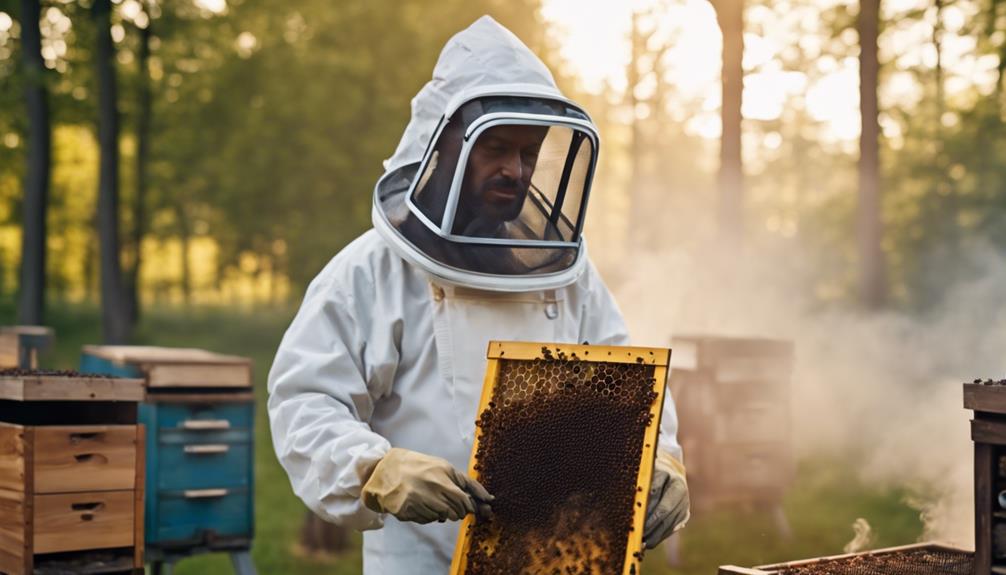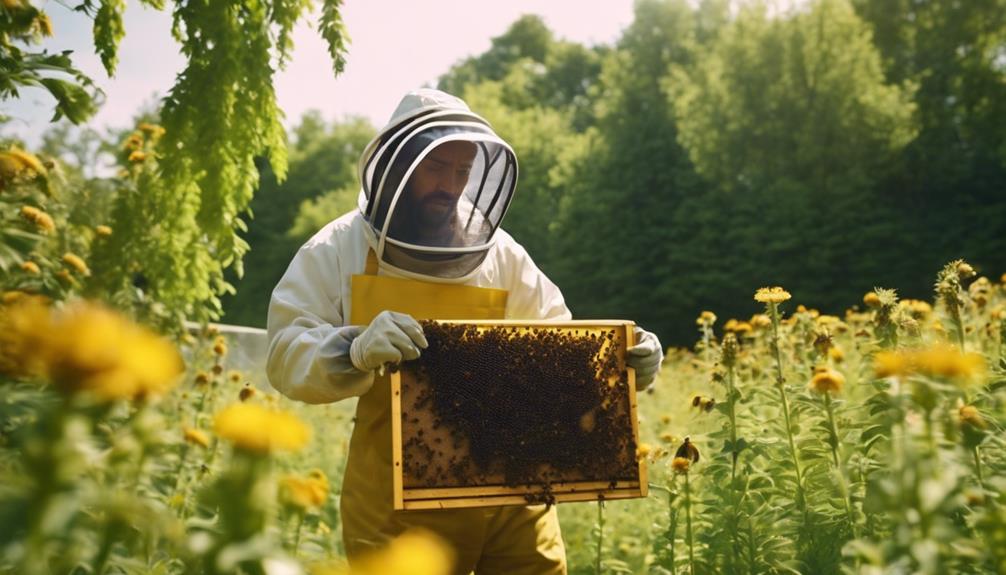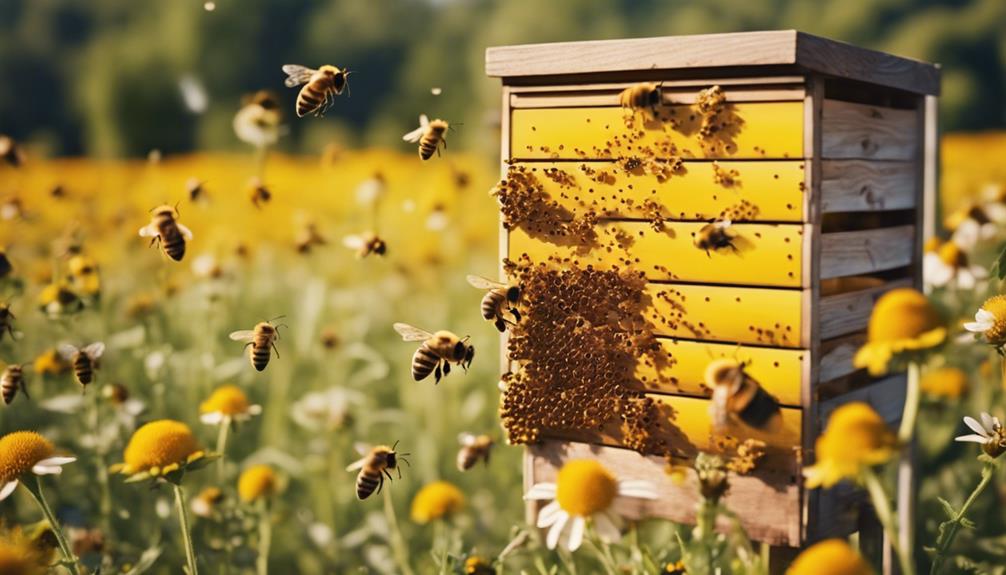Beekeepers today still use smoke to calm bees during hive inspections. This age-old method helps maintain peaceful interactions with these important pollinators. Although new techniques like sugar dusting or using essential oils are emerging, smoking bees remains a tried and true practice in beekeeping. The smoke masks bees’ alarm signals, reducing the risk of stings and making the bees more focused on their tasks. If you’re curious about the evolution of beekeeping tools and modern practices, there’s a whole world of information waiting to be discovered.
Main Points
- Beekeepers still use smokers to calm bees during hive inspections.
- Alternative methods like sugar dusting and essential oils are explored.
- Modern beekeeping practices prioritize sustainable and bee-friendly approaches.
- Some beekeepers work with bees without using smoke.
- The future aims to minimize smoke use and enhance bee well-being.
Evolution of Beekeeping Tools
Beekeeping tools have undergone significant advancements over the years, with the introduction of innovative devices like the bee smoker by Moses Quinby in 1873 transforming traditional beekeeping practices. The concept of using smoke to calm bees during hive inspections changed how beekeepers interacted with their colonies.
This simple yet effective tool allowed beekeepers to work more efficiently and safely, reducing the chances of agitating the bees. The smoker became a staple in beekeepers’ toolkits, providing a way to keep the bees calm and focused while tending to the hive.
Over time, beekeepers have experimented with alternative methods like using powdered sugar, but the classic smoker remains a popular choice for many due to its proven track record in keeping the peace within the hive.
Benefits of Smoking Bees
Using smoke when working with bees provides several key benefits that improve the safety and efficiency of apiary inspections. Beekeepers use smoke to calm bees by masking their alarm pheromones, which helps reduce the risk of getting stung. When bees sense smoke, they instinctively prepare to leave the colony, making them less aggressive.
Additionally, the consumption of honey by bees exposed to smoke diverts their attention, making them more docile during inspections. Proper use of smoke at the right temperature doesn’t harm the bees and is an effective tool for beekeepers to maintain apiaries.
Modern Beekeeping Practices
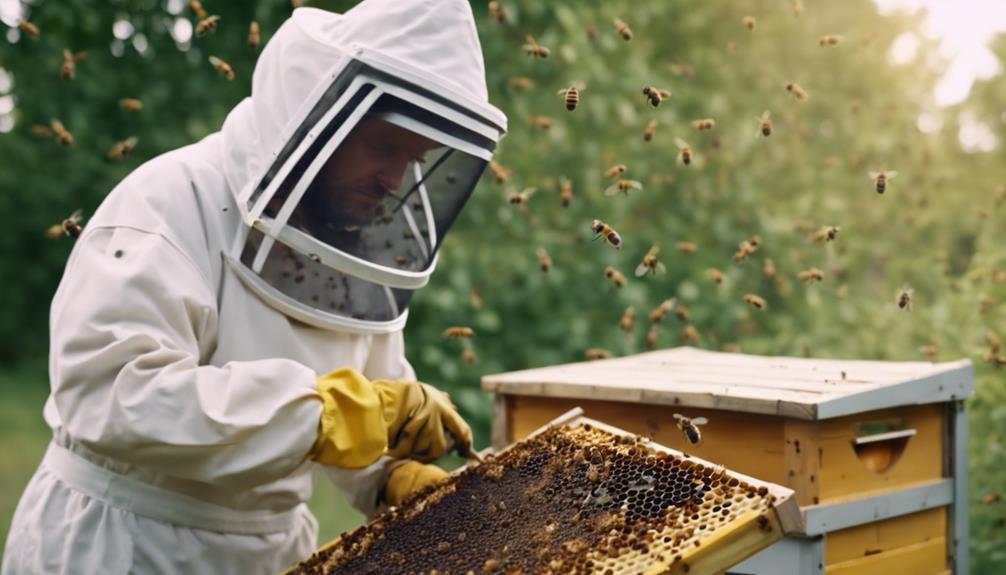
As beekeeping practices continue to advance, there’s a noticeable shift towards exploring alternative methods to smoking bees for hive management. Beekeepers are increasingly turning to techniques like sugar dusting and essential oils to minimize stress on the colony and promote more natural beekeeping approaches.
Embracing gentle handling methods, innovative beekeepers are finding success in working with bees without the use of smoke. By utilizing tools like bee brushes and gentle air puffs, they aim to reduce disturbance while caring for their bees. This modern approach prioritizes sustainable and bee-friendly practices, signaling a positive change in the beekeeping industry.
The evolution towards gentler methods not only benefits the bees but also offers beekeepers a more harmonious way to interact with their colonies.
Alternatives to Bee Smokers
Exploring alternative methods to smoking bees, beekeepers have found various innovative techniques to manage hives with minimal stress on the colony. Some opt for misting bees with sugar water to divert their attention during inspections, while others use a gentle leaf blower to move bees away from the hive area.
The bee brush is a favorite among beekeepers for delicately relocating bees off frames without the use of smoke. Additionally, playing soothing music near the hive can help relax the bees, reducing the reliance on traditional smoking methods.
Natural calming scents like lavender or chamomile placed near the hive entrance also offer effective alternatives to smoking bees. These diverse methods showcase the creativity and care beekeepers have for their colonies while promoting a tranquil environment for the bees.
Safety Considerations for Beekeepers
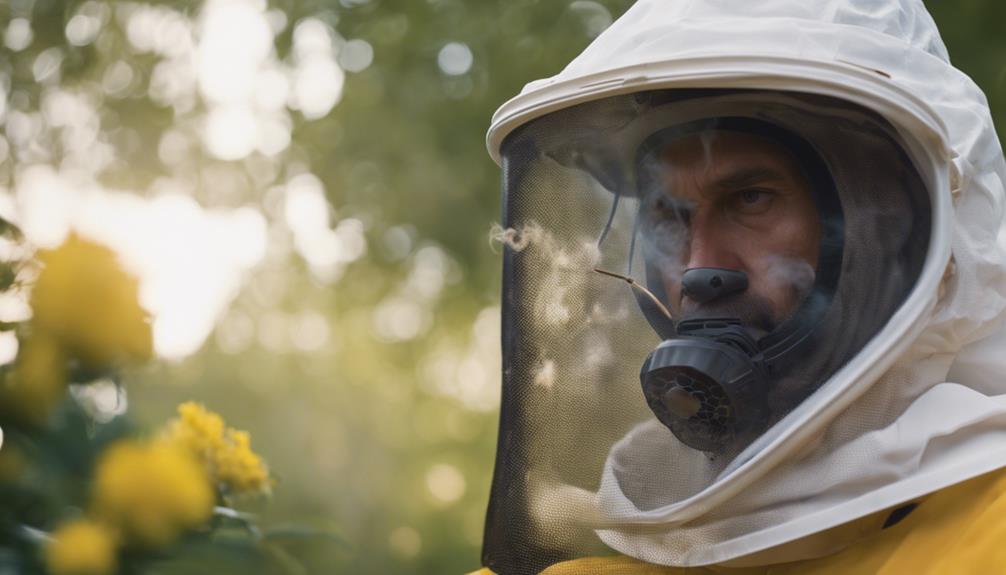
To guarantee our safety while tending to the hives, beekeepers must carefully consider various precautions and practices. When handling bees, safety is paramount. Here are three key safety considerations for beekeepers:
- Protective Gear: Wearing appropriate protective gear such as bee suits, gloves, and veils shields us from potential stings and ensures a secure beekeeping experience.
- Moderate Use of Smoke: Utilizing smoke during hive inspections helps calm the bees by disrupting their alarm pheromones, reducing the chances of aggressive behavior and stings.
- Regular Hive Inspections: Consistent inspections allow us to monitor hive health, address issues promptly, and maintain a harmonious environment for both bees and beekeepers. Remember, safety first leads to a thriving beekeeping journey.
Future of Beekeeping Techniques
In modern beekeeping practices, beekeepers are increasingly shifting towards alternative methods to minimize the use of smoke in calming bees. Some beekeepers are exploring the use of essential oils or sugar water as gentler ways to manage hives and reduce stress on the bees.
By embracing these alternative methods, beekeepers can promote healthy bee populations and create a more sustainable environment for these essential pollinators. Research into hive management techniques that prioritize the well-being of bees is paving the way for a future where beekeeping revolves around natural and bee-friendly approaches.
This shift towards more holistic practices not only benefits the bees but also contributes to a more harmonious relationship between beekeepers and their buzzing companions.

Hello! My name is Noel Calvin. I graduated from UCLA and now work as a writer at Launch Ninjas. I write blog posts that inspire and guide our readers in their entrepreneurial pursuits. I live in Pleasantville, NJ, with a peaceful yet lively atmosphere that inspires me.
Writing stories is more than just a job for me. It allows me to share my observations and satisfy my curiosity about the world. I combine my analytical skills with creative enthusiasm to delve into technology trends and startup stories. But my life isn’t limited to screens and keyboards. I value loyalty, passion, and a touch of old-fashioned charm, which I infuse into every narrative I create.
I love spending time in my garage, jamming with my band when I’m not writing. Playing the guitar and singing bring me immense joy. I also enjoy capturing ordinary and extraordinary moments through my camera lens and exploring new culinary adventures that excite my taste buds. I’m always seeking new experiences.
My family is very important to me. Joyful Sunday brunches filled with laughter and intense board game nights keep me grounded, reminding me of life’s simple pleasures.
In my world, every moment is an opportunity for discovery. Every discovery is a story worth sharing, whether a heartfelt moment at home or the pulse of technological innovations. Join me as I navigate through life, one blog post, one guitar strum, and one heartwarming family dinner at a time.
